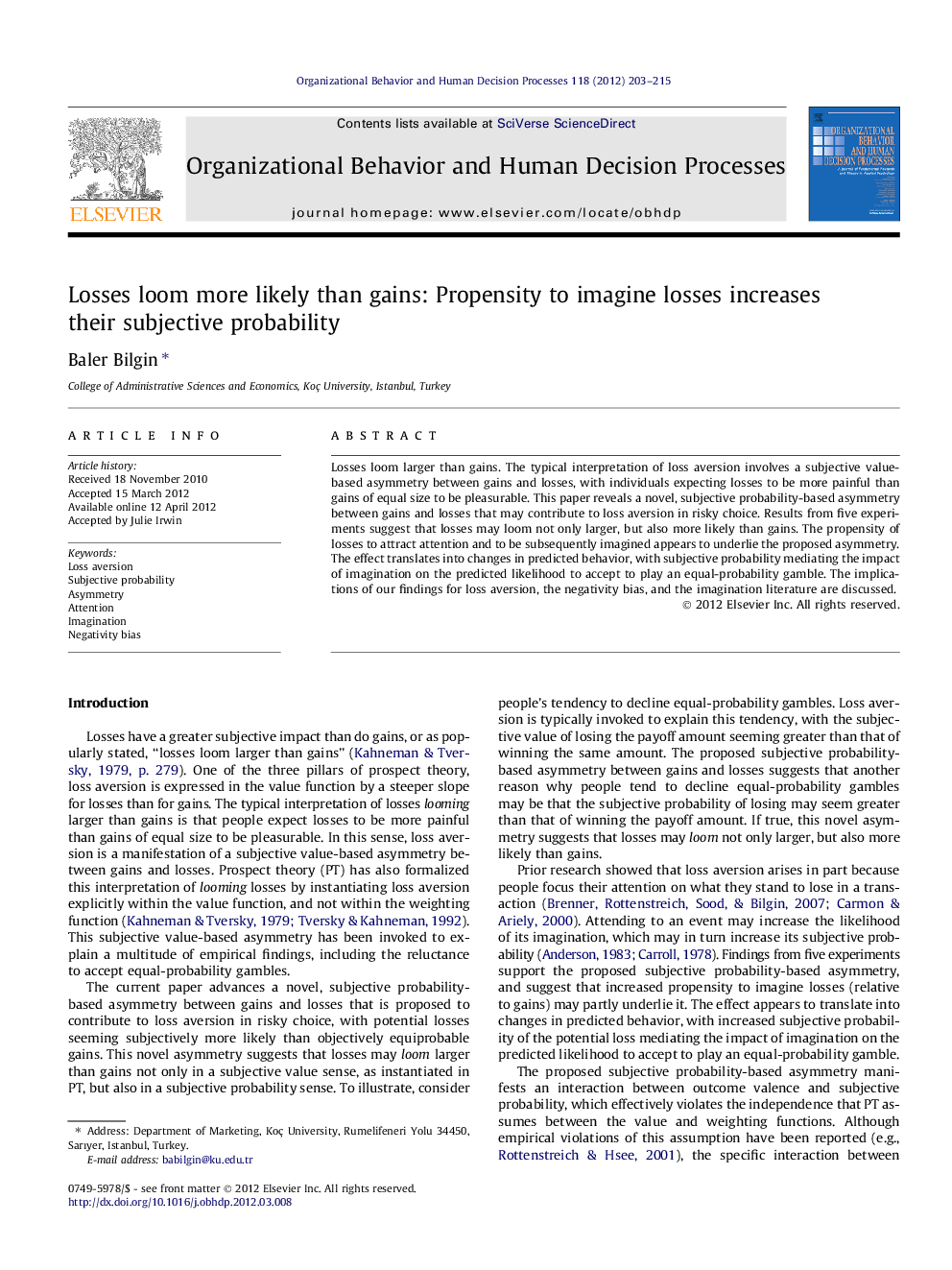| Article ID | Journal | Published Year | Pages | File Type |
|---|---|---|---|---|
| 888697 | Organizational Behavior and Human Decision Processes | 2012 | 13 Pages |
Losses loom larger than gains. The typical interpretation of loss aversion involves a subjective value-based asymmetry between gains and losses, with individuals expecting losses to be more painful than gains of equal size to be pleasurable. This paper reveals a novel, subjective probability-based asymmetry between gains and losses that may contribute to loss aversion in risky choice. Results from five experiments suggest that losses may loom not only larger, but also more likely than gains. The propensity of losses to attract attention and to be subsequently imagined appears to underlie the proposed asymmetry. The effect translates into changes in predicted behavior, with subjective probability mediating the impact of imagination on the predicted likelihood to accept to play an equal-probability gamble. The implications of our findings for loss aversion, the negativity bias, and the imagination literature are discussed.
► Loss aversion manifests a hedonic asymmetry between gains and losses. ► We find that losses may loom more likely than gains in addition to looming larger. ► This novel asymmetry may contribute to loss aversion in risky choice. ► Propensity to spontaneously imagine losses appears to drive this asymmetry. ► The proposed effect translates into changes in predicted behavior.
